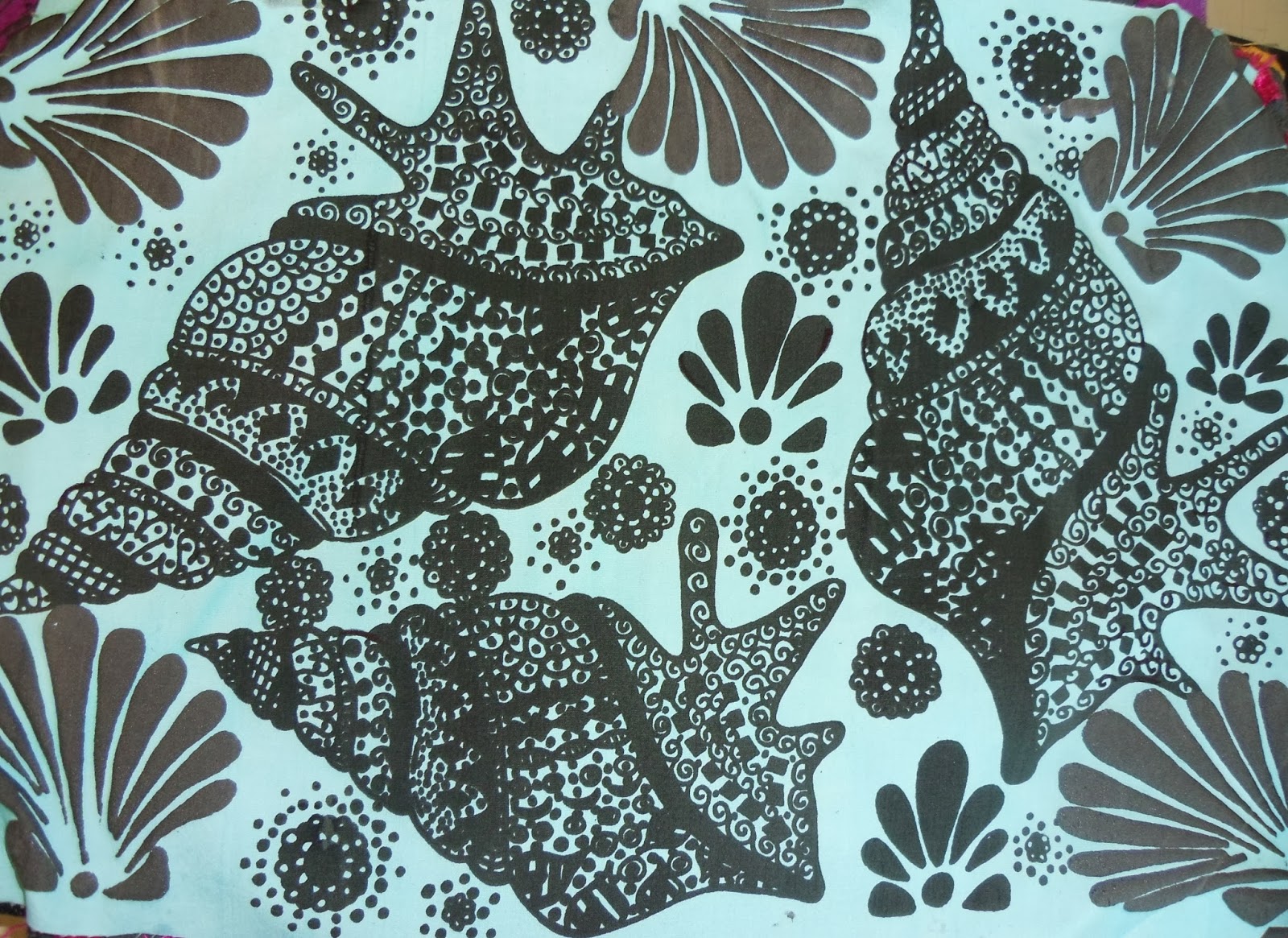The first step was to buy my fabric, I had them cut to A3 size, this is the fabric I bought: Cotton, Heavy Viscose Satin, Devore Silk Viscose, Muslin, Medium Calico and Habotai Silk Heavy. I also used black light Satin, and black Cotton. I dyed most of my fabric in various colours of cold water dyes, once they naturally dried I put them on the heat press for 20 seconds to set the dye at 180 degrees. Then I rinsed them with warm water till it ran clear, this is to make sure the chemicals have all been washed away from the fabric. I dried the fabric again and placed it on the table, I put masking tape in each corners to prevent it from moving. I then placed my screen on top of the fabric. I dabbed black pigment ink at the top of the screen and firmly pulled down the ink using a squeegee. I did this a couple of times to reveal a print on my fabric. To prevent the screen from blocking I washed it with the water power jet and then placed it in the drying cupboard. Once my fabric print had dried I placed it on the heat press again for 20 seconds at the same temperature to set the pigment ink. I used other techniques such as Devore and Puff Binder. Devore is a paste that will only work on Devore material, it burns away the fibers to reveal a lace look pattern, I first screen printed the paste onto my material then let it dry naturally. This took quite a while but eventually it dried, so then I put it on the heat press and then rinsed all the yellow stain away with warm water. I then let it dry, dyed, pressed and washed it again. With puff binder I screen print it onto my material and then heated it up with a heat gun to puff up the paste, but don't put it on the heat press afterwards because the puffed up parts will go flat. Its important to wash your screens often as they can block quite easily. Here are my prints, I have used different techniques and two screens on some, so take a look! also take a look at this link so that you can try screen printing yourself.
Wear gloves and apron to prevent skin irritation and skin staining. Keep work area clean and tidy to create the best print possible. Be careful when moving around with the dyes as there could be slippery surfaces which could cause spillages. Be careful when using the water power jet, as it can be quite powerful. Be spatially aware of other people.
Pricing List:
Puff Binder 1 Pot = £15.00
Pigment each = £5.00
Procion each = £5.00
 |
| Habotai Silk Heavy, Green Mx2B Procion dyed background, Black SN-G pigment screen printing ink. (1 screen). This was a beautiful delicate material to work with but when I printed onto it it was really difficult because the fabric kept moving. Overall i'm not pleased with the result because the detail didn't show up properly due to too much pigment being pushed through the screen. |
 |
| Muslin, Turquoise MxG 60ml and Green Mx2B 20ml Procion dyed background, Black SN-G pigment ink screen print. This material was really nice but more for a scarf rather than a dress because its quite transparent which also affects the quality of the print, however the colours work well together. |
 |
| Devore Silk Viscose, Devore paste, Red Mx5B 35ml and Orange Mx2R 35ml. This was my least favorite sample because I put too much Devore paste onto the screen, so when the sample had been dried and finished, alot of the pattern was unrecognisable. Despite not working like I had hoped it still had a nice lace effect. |
 |
| Heavy Viscose Satin, Red Mx5B Procion dyed background, Black SN-G pigment ink screen print, screen 2: Q print Black puff binder. I love this material and really looked forward for my design to be printed onto it but when I came to screen printing it onto my fabric it dried really faded which slightly disappointed me and the material is probably too heavy for summer. I really like the colour on the material because it gives a metallic effect. The puff binder works perfectly on the fabric but the pigment ink doesn't. |
 |
| Heavy Viscose Satin, Turquoise MxG 60ml and Green Mx2B 20ml, Black SN-G pigment ink background, screen 2: Q print Black puff binder. Again the pigment faded on top of the material but the puff binder looked really good against the fabric. The colour was an experiment that I made using two different dyes, I think the color is ideal for this project and it was a risk experiment that worked out perfectly. |
 |
| Scrap material, screen print, plain puff binder. (1 screen). Although I wont be able to use this fabric because its scrap material I just wanted to experiment on various materials and the puff binder was stunning against the green. It was a very simple process but yet very effective. |
 |
| Black Light Satin (scrap material), screen print, puff binder. (1 screen). This was an experimental piece on scrap fabric, it looked really effective but as I applied heat to the puff binder the material started to shrivel and the sample got smaller and smaller bringing the patterns closer together. This in a way looked quite good but due to it shriveling it couldn't be used for a dress. Also with any puff binder appliance it would not be suitable for a dress because as soon as you wash it or heat it up it just burns and goes flat. |












































